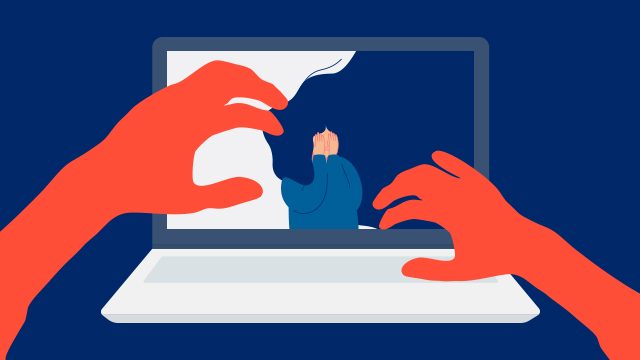SUMMARY
This is AI generated summarization, which may have errors. For context, always refer to the full article.

MANILA, Philippines (1st UPDATE) – With Filipinos consecutively topping the world in terms of social media use, there is a lot of room for abusers to engage in sexual exploitation of children behind closed doors and in front of a webcam.
The Philippines has been dubbed by the United Nations Children’s Fund (Unicef) the “global epicenter of the live-stream sexual abuse trade.” One in 5 Filipino children are vulnerable to online sexual exploitation. (READ: Stolen: Pretty Girls)
Even with the Philippines at Tier 1 of the US State Department’s Trafficking in Persons (TIP) report since 2016, which means it meets the minimum standards for eliminating human trafficking, the problem remains rampant over the country. Unicef even tagged the country as the top global source of child pornography in 2017.
The Department of Justice (DOJ) Office of Cybercrime received at least 600,000 cybertips of sexual images of Filipino children in 2018. This is more than a 1,000% increase from the previous 45,645 in 2017. (READ: PH government, private sector launch joint campaign against online child sexual abuse)
From March to May 2020, the DOJ found that reports of OSEC increased threefold, when the COVID-19 hard lockdown was imposed. The office received 279,166 cyber tips during the three-month period, compared to 76,561 cyber tips over the same period in 2019.
The DOJ blamed the development on telecommunication companies’ alleged failure to block the prohibited materials.
Officials from the DOJ and the Philippine National Police (PNP) reported continuous training of their front liners for prosecuting the evolving crime. But why are so many children in the Philippines still in danger of being sexually exploited online?
Easy deed
Unicef and the Child Rights Network reported that a number of factors in the Philippines allow for easy proliferation of online sexual exploitation of children (OSEC). These include:
- widespread poverty and resorting to OSEC as a form of income
- cheap internet and smartphones
- ability to speak English well
- wide availability of money remittance centers
- prevailing norms of secrecy
- lack of parental supervision, sometimes caused by parents having to work abroad
- lack of resources to investigate and prosecute perpetrators, and rescue and rehabilitate victims
Unicef also noted the “alarming” involvement of children’s own family members as crime facilitators. (READ: [OPINION | Dash of SAS] Online sexual exploitation of children is a family business)
Weak investigations
Out of thousands of reports in 2018, only 27 convictions of OSEC perpetrators were made, according to the 2019 US TIP report.
The TIP report also said that even though the government has continued to demonstrate serious efforts, it “did not vigorously investigate and prosecute officials allegedly involved in trafficking crimes.”
Most of the 73 convicted human traffickers in 2020 subjected children to sex trafficking, including 25 who sexually exploited children online, according to the 2021 TIP report. This is a drop from the 32 convictions in 2019.
The 2021 TIP report also said that the government “did not convict any officials for complicity in trafficking crimes.”
In October 2019, the Department of Social Welfare and Management (DSWD) said that internet service providers (ISP) have not been fulfilling their part in the anti-child pornography law, which is to inform the PNP and the National Bureau of Investigation within a week of receiving knowledge of child porn engagement on their servers.
Insufficient laws
OSEC crimes fall under various laws like the anti-child pornography and cybercrime prevention acts, but there is no current all-encompassing law that clearly includes the full range of OSEC activities. According to the Child Rights Network, these include:
- recruitment and online technology
- stages of commission
- participation in the offense
- corresponding penalties
After a long battle by advocates, the bill prohibiting online and offline child sexual abuse and exploitation is set for negotiation at the bicameral conference in Congress as of January 31, 2022.
This bill aims to fill in the gaps that current laws related to OSEC have. For instance, the anti-child pornography law of 2009 does not explicitly cover livestreaming of sexual content and the role of social media in OSEC.
Meanwhile, in December 2020, the Department of Information and Communications Technology launched its Child Online Safeguarding Policy. This mandates the blocking of pornography and other harmful, “child-inappropriate” materials in the Free Internet Access in Public Places Program under Republic Act 10929.
To report cases of OSEC, call 1343 for Metro Manila and 02-1343 for outside Metro Manila. You can also report cases online at www.1343actionline.ph. – Rappler.com
Add a comment
How does this make you feel?





There are no comments yet. Add your comment to start the conversation.